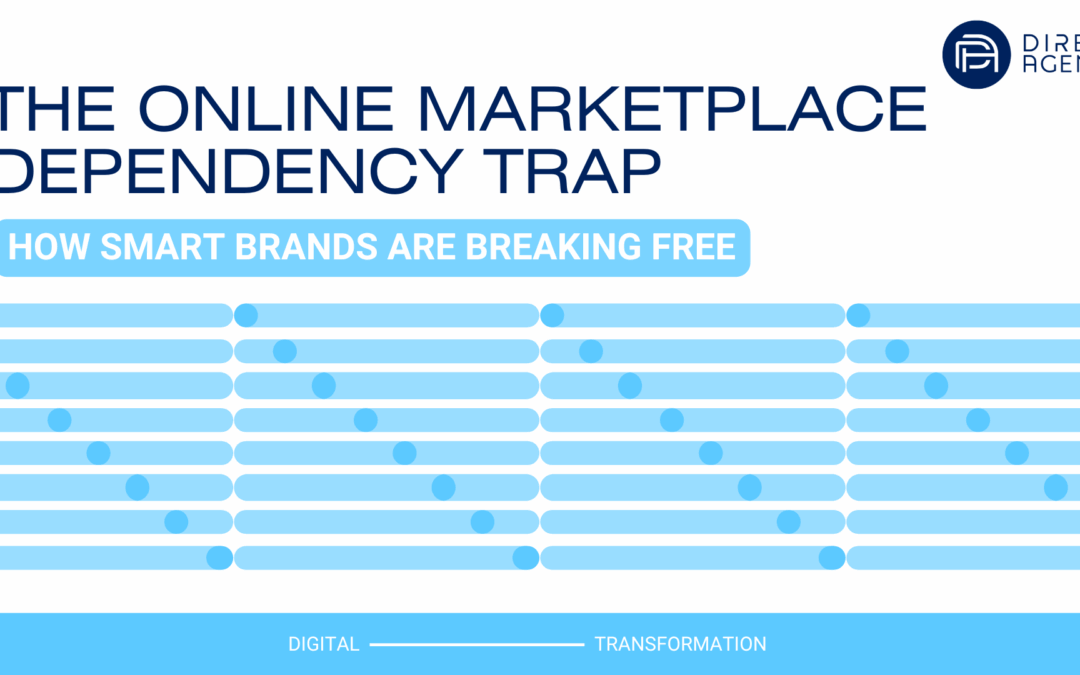The e-commerce landscape has reached a tipping point. While marketplaces like Amazon and Walmart remain important, their rising costs and tightening control over customer data are forcing brands to diversify. Smart brands are now building sophisticated omnichannel strategies that reduce marketplace dependency while maximizing owned-channel performance.
The shift is already underway: direct-to-consumer sales grew 45% in 2024, outpacing marketplace growth for the first time since 2019. Meanwhile, marketplace advertising costs have increased 30% year-over-year, making alternative channels not just strategic but economically necessary.
Here’s the tactical framework that brands can use to build this smarter, more diversified approach:
Start with What Moves the Needle
Segment Products by Profitability or Speed
Not every product deserves the same amount of ad spend, especially when you’re building beyond marketplaces where margins matter more. Start by labeling your catalog based on what matters most: profitability, inventory velocity, or customer demand.
For example, infant formula has remained a consistent winner because of its steady demand and fast turnover. When you’re paying Google Ads costs instead of marketplace fees, directing your media dollars toward these high-performing SKUs means you’re investing in what works hardest for your bottom line.
Let the Feed Do the Work
Use Feed-Only Campaigns to Promote Key Products
Feed-only campaigns are a tactical goldmine for highlighting new, seasonal, or exclusive offerings without needing new landing pages. Think limited-edition bundles, intro offers, or holiday packs that showcase what makes your direct channel special.
These campaigns show up in Shopping results and are perfect for grabbing attention from first-time buyers looking for something they can’t find on Amazon. The key is promoting products or bundles that differentiate your direct channel.
Get Smarter with Geography
Use Geo-Bidding to Prioritize High-Performing Regions
Geographic performance often reveals surprising insights that marketplaces mask. Look at your data to find ZIP codes or states where people convert at higher rates or where your lifetime value (LTV) is stronger—these become your priority regions for direct-channel investment.
This geographic intelligence is particularly valuable when competing against marketplace convenience, as you can focus spending where customers are already inclined to buy directly.
Boost Clicks with Emotional Triggers
Add Value-Oriented Language to Product Titles
Shopping titles are prime real estate, especially when competing against marketplace listings. Small language shifts like adding “Best Seller,” “Organic,” “Doctor Recommended,” or “Exclusive Bundle” can significantly impact click-through rates.
The key is emphasizing what makes your direct offering special—exclusive access, better pricing, or unique product configurations.
Make Pricing Work for You
Use Visuals to Emphasize Direct-Channel Value
If you’re offering better pricing or unique value through your direct channel, show it clearly. Strikethrough pricing, “Subscribe & Save” discounts, or “Bundle & Save” messaging help shoppers see the direct-channel advantage immediately.
In categories like baby formula, where cost comparisons drive decisions, these visual cues can overcome the convenience advantage of marketplaces.
Don’t Forget About Your Warmest Leads
Re-Engage High-Value Customers
Cart abandoners and past buyers with strong LTV are your lowest-hanging fruit for direct-channel growth. These audiences are already familiar with your brand and more likely to convert outside marketplace environments.
Upload first-party customer lists into Google Ads and serve targeted offers—exclusive bundles, member pricing, or early access to new products. Using Performance Max or Smart Shopping, you can re-engage these shoppers across multiple touchpoints.
Test and Learn with Demographics
Tailor Campaigns by Age or Gender
Demographic customization becomes more valuable when building direct relationships. Test campaign variations by age range or gender, especially in verticals like parenting where messaging preferences vary significantly.
Maybe one campaign speaks to new parents focused on quality and safety, while another appeals to experienced parents who prioritize value and convenience. This level of customization is harder to achieve in marketplace environments.
The Strategic Advantage
Building an omnichannel strategy beyond marketplaces isn’t about abandoning platforms that work—it’s about reducing dependency and increasing profitability. By implementing these tactical approaches, brands typically see 15-25% lower customer acquisition costs and 40% higher profit margins compared to marketplace-only strategies.
The brands moving fastest on this transition are building sustainable competitive advantages, while others remain dependent on increasingly expensive marketplace channels. These tactics provide the foundation for that transition, focusing spending where it generates the highest return while building direct customer relationships.
The key is starting with what you can implement immediately, such as geographic targeting, feed optimization, and audience segmentation, then building towards more sophisticated omnichannel orchestration over time.
Want help implementing these tactics for your brand? Our e-Commerce team has guided many brands through this transition, combining strategic planning with hands-on execution. Reach out at [email protected] to learn more.
Nicholas Galante, VP of eCommerce, Direct Agents


